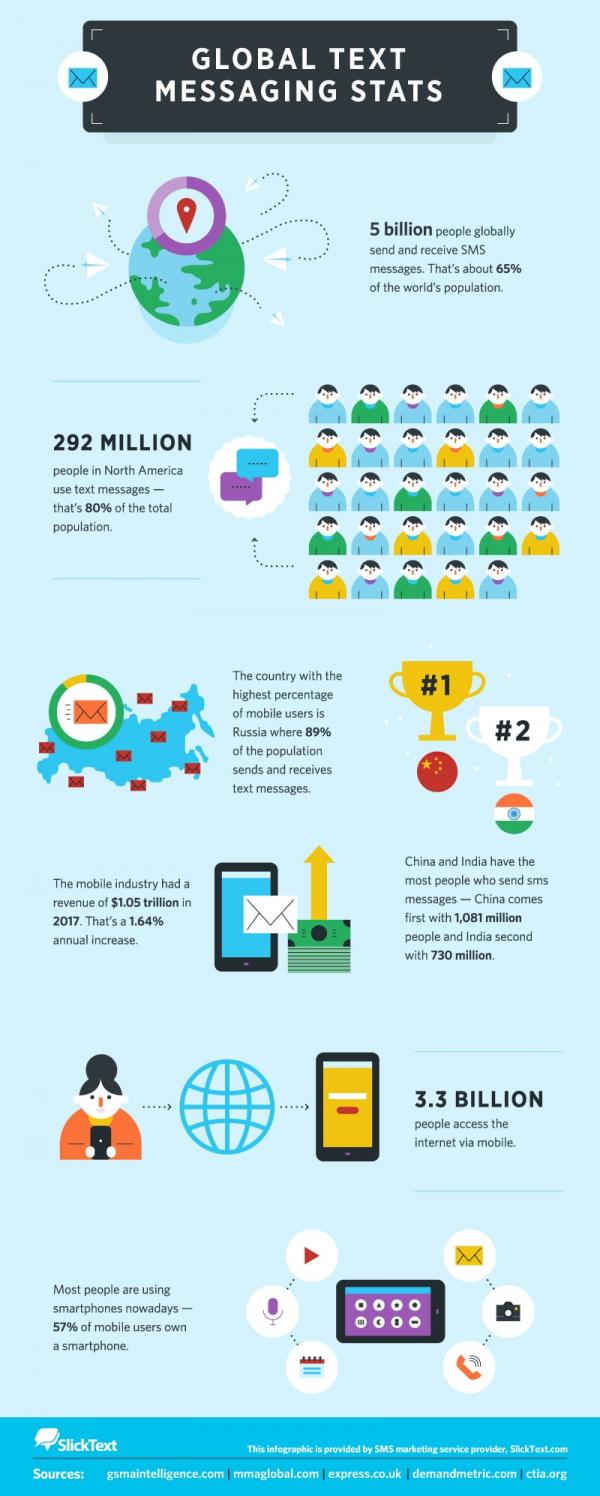There are tons of ways to stay in touch with a smartphone, but texting via SMS (Short Messaging Service) still dominating the majority of our communications. You have a cell phone, you can use SMS.
Even these popular social media apps that use data connection and provide more feature-rich experiences such as WhatsApp, Snapchat, Facebook and Messenger, and yet, texting via SMS is still a common part of people’s lives. So the question is why?

Smartphones Support SMS Natively
You don’t have to download any certain Apps or go through all the hoops to signing up for an account with another social media platform, and worrying if the other person you want to connect is also on the same platform.
With smartphones supporting SMS natively, you can even use an older flip phone to reach out to someone, regardless of what their other messenger apps or their phones brand.
Speed Enhancement
SMS Texting is the quickest way to connect with friends, colleagues and older generations as well, who prefer the simplicity of texting overusing some fancy social media connected apps with extra features.
SMS is Cheap
SMS is also very cheap at least if you’re in the US where data can get expensive, according to a new study from Finnish research firm Rewheel.
Anyway, looking at the old days, you probably remember when flip phones ruled the world. People only had so many texts per month included in their plan list. And when someone uses their phones to send for five hundred texts, they shout in anger.
But since the number of cell phone carriers increased, network companies started to offer unlimited texts for customers that won’t chew through their data allowance.
Rialibilty
SMS can be more reliable than other messaging apps available both on IOS and Android. Although you need an internet connection to use Google Hangouts or GroupMe, SMS only needs a basic cell connection. So, if you’re in an area with limited antenna coverage, SMS texting is your safety boat for staying in touch with others.
MMS Vs. SMS
If you’re hesitating which one to pick up between MMS Vs. SMS. Let me tell you this. The differences between the two aren’t substantial. That being said, sending photos and videos over MMS which is built on top of the SMS standard, is slower than other social media apps, but it’s still a viable option.
Truth be told since SMS works over a standard cell connection from the early 1990s and we’re now in the 20s, texting via SMS has become very entrenched with around five billion users worldwide. Although it has a restriction of 160 characters per text message, whereas MMS messages allow for unlimited characters, SMS has far more adoption than even the most popular data-based messenger services.

And that leads us to the next point, Adoption.
Adoption
SMS seems to be as popular as ever, especially with business. For instance, think about how they provide short five-digit codes at sporting events to make it easy to report that drunk guy who just won’t sit down. And when airline companies use SMS to quickly send you updates on whether your flight is delayed without you having to download any kind of additional app. So why SMS is so effective for business?
Because every phone that was ever made, can send and receive texts.
Now, giving SMS texting all this outstanding feedback such as reliability and versatility, it doesn’t mean that there are no limitations.
That’s why Google’s exciting innovation service called RCS, which stands for Rich Communication Services will convert texting into a far richer and engaging messaging product.
This Google wonder is going to bring the SMS we know, into the modern age. The early examples of this come from the UK. A company called Virgin is the first of its kind to launch a live RCS service but we’re yet to hear how successful it’s been.

After saying all that, I think the current texting SMS system will probably stick around for a while as a trusty backup. So don’t look for it to be going away in the near future. Besides, you’re going to need it if you’re one of those people who’s waiting for the flip phones to make a comeback.







